Children's toys 'marketed at gender' over the years
- Published
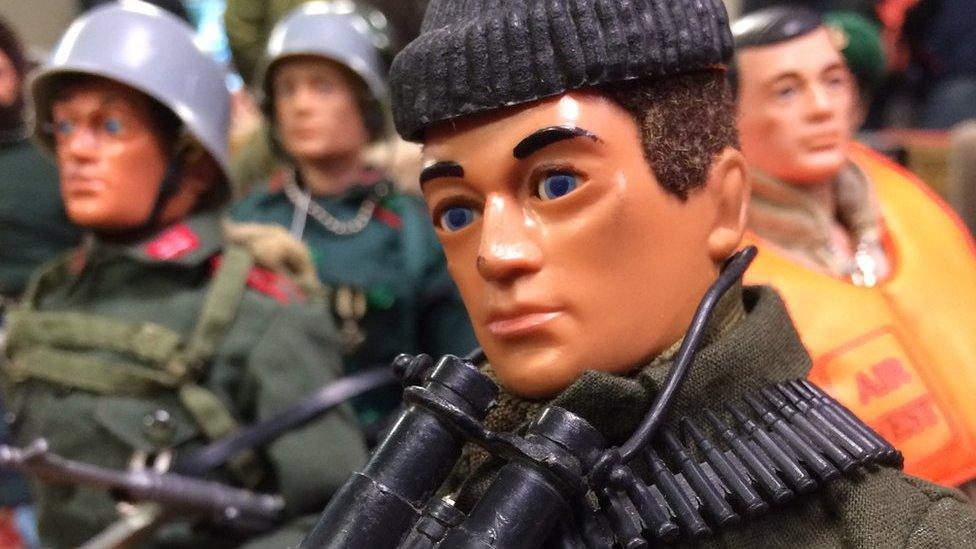
Action Man was a "laughing stock" when first released - with critics questioning boys playing with dolls
Action Man, Sindy and Barbie.
They are all well-known names in the toy industry - but with campaigns against "sexism" in the way toys are marketed, do manufacturers know where they stand?
And can they please everybody?
Gender has been an interesting part of the toy industry for decades, according to Hilary Kennelly from the West Wales Museum of Childhood.
During her own childhood, in the 1950s and 60s, she remembers girls playing with dolls and boys playing with cars as being "how it was".
"Nobody really thought about it for centuries, boys played with boys' stuff and girls with girls' stuff and that was it," she said.
"There were various little protests here and there with people trying to change things but nothing really changed until probably the 1960s, with the women's liberation movement.
"The toy designers have been confused ever since."
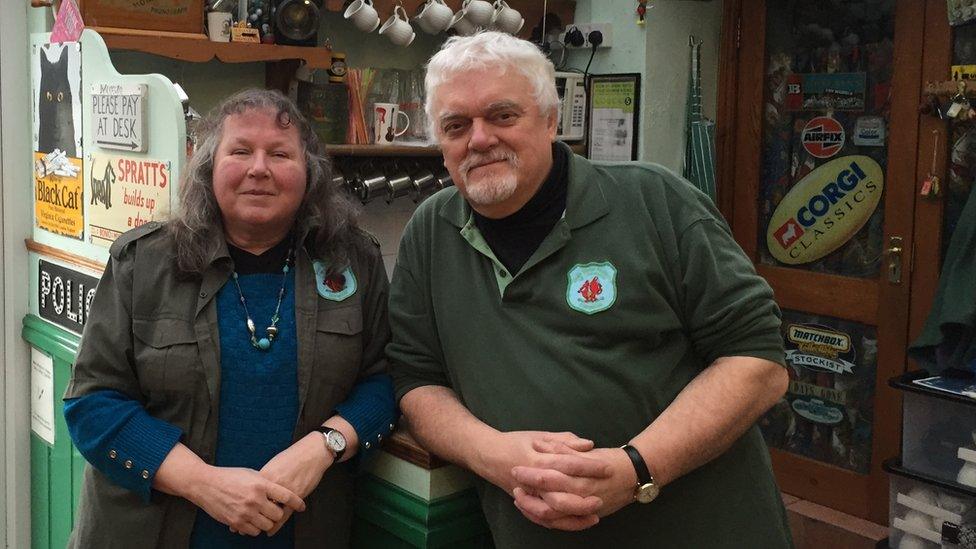
Hilary and Paul Kennelly have run the West Wales Museum of Childhood for 10 years
Hilary said people then began asking for equality - but despite "conditioning" children would ultimately choose what they wished to play with.
"It did become a minefield out there," she added.
"When Action Man came out it was the laughing stock of the 1966 toy fair, 'a doll toy for a boy? You'll be laughed out of the industry', and of course it was the toy of the year for the next 10 years.
"But it looks 'boyish' and it is a jolly good thing to play with."
While Hilary added the same company did issue an Action Girl toy, she said there was no "Action Woman" despite the existence of the Women's Royal Air Force and the Women's Royal Naval Service.
"Action Girl didn't have anything to do with what Action Man was doing, she had long hair you could comb, it only went as far as the name," she said.
Lego, meanwhile, presented itself as unisex and in the 1970s and 80s took the approach of not marketing by gender.

A "female friendly" Lego range was launched
In 2014 three new Lego figures - all female scientists - were unveiled.
"I played with Lego as well," Hilary said.
"They kept very much to basic colours: white, red, blue and grey.
"In fact there were no bricks of green because apparently they didn't want people to build warships."
But later on, Hilary said, Lego did begin to make more toys "aimed towards ickle girls with dolly furniture and pink things".
"There was something in the toy world that they [girls] have got to have pink and I think there was a lot of influence from America," she said.
Hilary said television had also been an "enormous influence" on the industry.
She added: "There really wasn't that much toy advertising in the days before everybody had a telly, toys were popular by word of mouth."
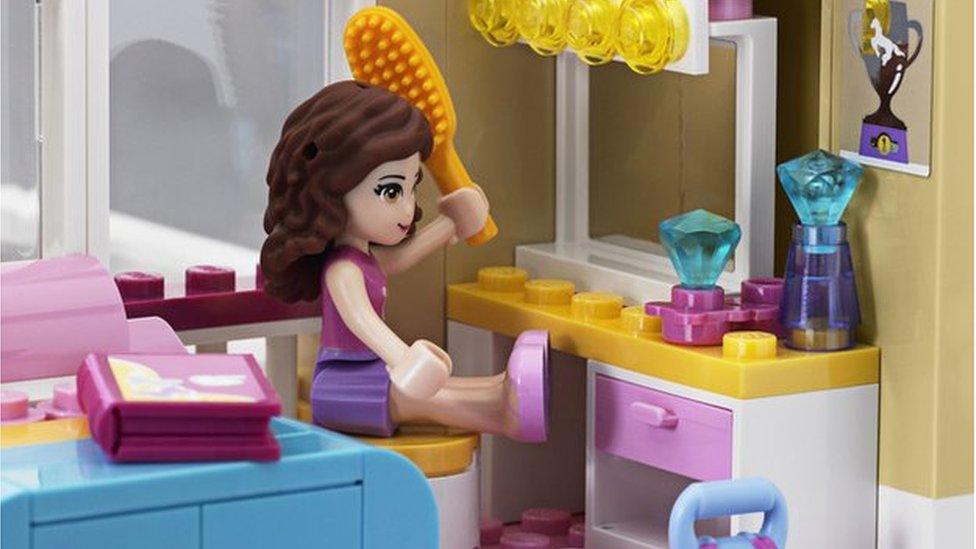
The Lego Friends range was criticised by some
The "must have" toy became a concept, Hilary said, with Christmas 1992 being a time she "would never forget" after the Thunderbirds' Tracy Island toy craze "all children must have".
"Mothers were fighting in the aisles of Toys R Us," she said.
"Bribes were being made to toy buyers.
"We managed to get all of the ones we ordered but we had a waiting list as long as that again.
"On Christmas Eve, at 5:50pm, 10 minutes before closing, we had one in the back room.
"She had been rung to collect it but [the mother] still hadn't come so we rang her and she said 'oh, I don't think I'll bother'.
"We rang the next number on the 'not a chance' waiting list and he arrived with smoke pouring from his car, almost in tears that he had managed to get one.
"But that was all whipped up by the media, such a fuss was made of it, it's amazing what does get whipped up.
"If you look at doll categories, Sindy and Barbie were fashion dolls at first but we started to get these Disney princesses coming in from America with butterfly wings and pink things, there was quite an onslaught."
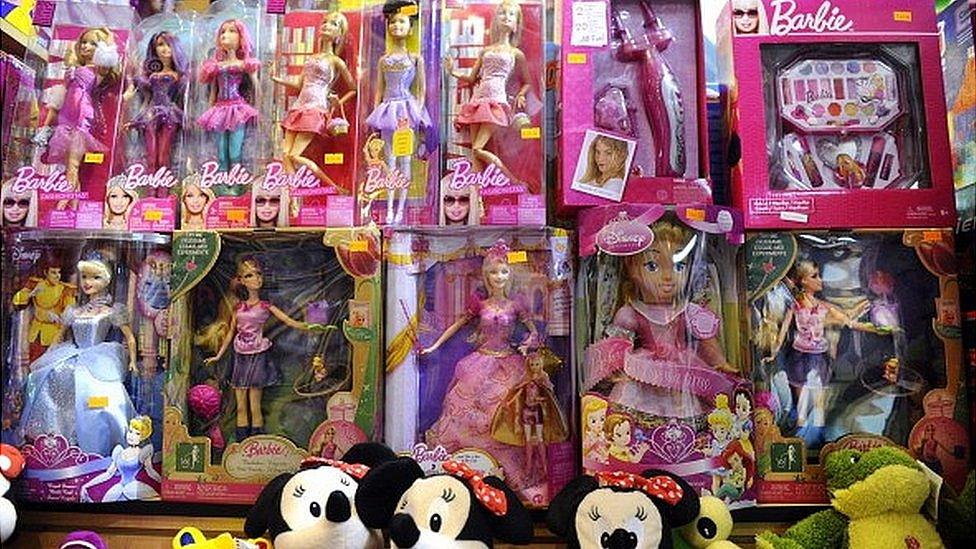
There are campaigns, including Let Toys Be Toys, external, which "name and shame" companies and shops on social media for dividing toys by gender - particularly when toys relating to science and industry are automatically placed in the "boy" section.
The campaign calls on toy and publishing industries to stop "limiting children's interests by promoting some toys and books as only suitable for girls, and others only for boys".
It instead asks retailers, booksellers and manufacturers to sort and label toys and books by theme or function.
Hilary said: "Most of the time, [shops] put things that possibly a girl might play with in the boys' section, but they don't put a thing a boy would play with in the girls' section in the shops.
"It is a tricky one."
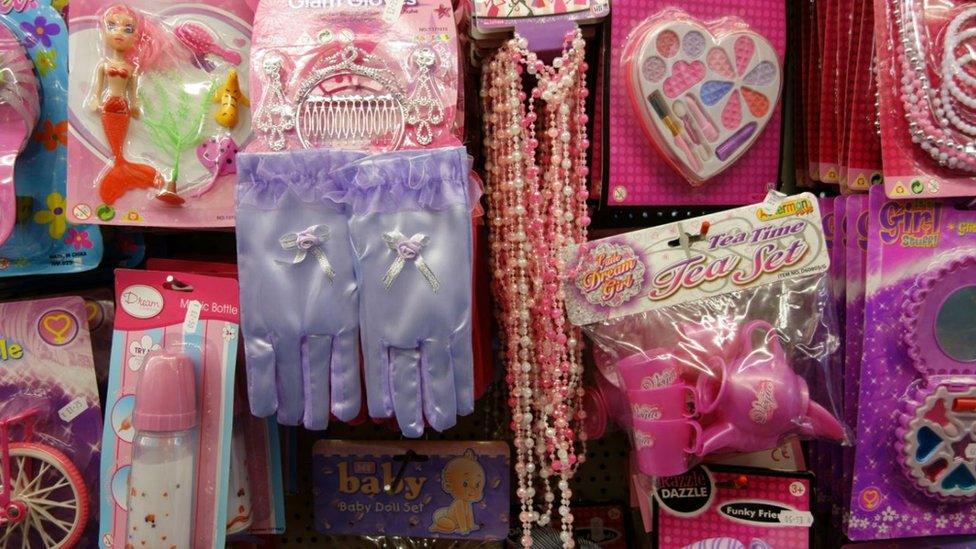
Elizabeth Lloyd-Parkes, a senior lecturer in marketing at the University of South Wales, wrote her doctoral research on the child consumer.
A complicating factor, she said, was the child being the consumer - but one without disposable income - with adults ultimately making their choices for them.
"Adults will purchase within their own comfort zones. Manufacturing and marketing decisions, we know, should start with market researchers," she said.
"They are supposed to fulfil what the consumer wants, and are responding to what the parent wants to buy for their child, so it's a difficult one to break.
"I think [this issue has] been going on for some time now."
She added there had been efforts to challenge shops to categorise toys by theme and not by gender.
"Manufacturers are basically trying to please everyone," she said.
"The whole issue is not black and white - it's very much blue and pink."
- Published27 August 2017

- Published12 April 2017

- Published6 August 2014
